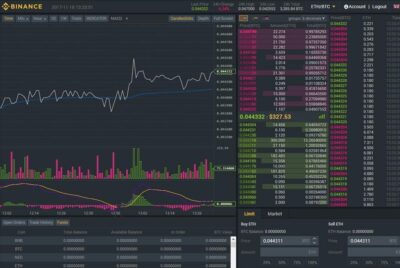Contents
However, if the value of the momentum begins to drop toward 0, this is a sign that the trend is waning. In a recession, safe havens, such as the USD, could remain firm, in addition to defensive stocks with strong balance sheets, such as utilities, energy, and basic consumer goods. Please note, placing contingent orders does not necessarily limit your losses to the expected amount, as market conditions may prevent you from executing such orders. Chaikin Volatility – generates an oscillator that applies Moving Average Convergence Divergence to accumulation-distribution rather than price.

Investopedia requires writers to use primary sources to support their work. These include white papers, government data, original reporting, and interviews with industry experts. We also reference original research from other reputable publishers where appropriate. You can learn more about the standards we follow in producing accurate, 12 Trader Forex Broker Overview unbiased content in oureditorial policy. Created by John Bollinger, Bollinger Bands® are helpful in seeing periods of quiet and explosive trading. Charles is a nationally recognized capital markets specialist and educator with over 30 years of experience developing in-depth training programs for burgeoning financial professionals.
Volatility Index
The Relative Volatility Index is also a popular volatility indicator in the market. It was developed by Donald Dorsey and is slightly similar to the Relative Strength Index. An inverse volatility exchange-traded fund is a financial product that allows investors to bet on market stability without having to buy options.

Also, currency versions of VIX won’t help you much if you trade exotic currency pairs. If you want to calculate market volatility through this volatility indicator stock, at first, you need to calculate SMA, which is called, as well, a simple moving average. After that, you need to calculate the standard deviation during the time which was used for calculating SMA. In the case of the upper band, you need to sum SMA and the rate of standard deviation. For the lower band, you need to see the difference between the SMA and standard deviation.
Measuring Risk with Value at Risk (VAR)
For this reason, you should always trade with a stop-loss or exit point in mind. We host the international trading platform, MetaTrader 4, through our own software. MT4 is available to customise and provides a wide array of indicators to track and anticipate volatility changes. In addition, MT4 also supports automated trading solutions called Expert Advisors, which are computer programs that trade on your behalf. Learn more about trading with MT4 here or register for an MT4 account now. As a general guideline, when a major stock index such as the S&P 500 is experiencing above average market volatility, the individual stocks within the index will also see more volatility.
A put option is the right but not the obligation to sell a currency pair at a specific exchange rate on or before a certain date. The exchange rate where the currency pair will be transacted is referred to as the strike price while the date wherein the option matures is called the expiration date. Volatility is the change in the returns of a currency pair over a specific period, IQ Option Overview annualized and reported in percentage terms. The larger the number, the greater the price movement over a period of time. There are a number of ways to measure volatility, as well as different types of volatility. Keltner Channel— although rarely present in trading platform as abuilt-in indicator, Keltner Channel is a rather popular measure of the market volatility in Forex.
Notice that based on the daily chart shown below, over the past four months, 16.50 points is considered low volatility as defined by Wilder’s ten-period ATR. An interesting indicator from the Forex TSD days called “Silence” which helps you to determine flat price action and the beginning of a volatile move. The market index calculates market trends and is determined using the price fluctuations of underlying stocks. Volatility indicators in the stock market are commonly used to forecast potential chaotic market movements. According to these metrics this and many other factors, one of the best volatility trackers to measure the stock market’s volatility is boiled down to CVI, Bollinger Bands, and ATR. Let’s discuss them one by one and learn what their main features are and how they are used in the marketplace by stock traders.
- Since implied volatility is generally a mean reverting process, you can use different technical studies that measure this – such as the Bollinger bands indicator.
- The volatility squeeze occurs when Bollinger Bands move inside the Keltner Channel.
- For those that are not actively trading options, there are some tools you can use to find current options implied volatility.
- A parabolic stop and reverse is a pattern that creates a parabolic curve on the forex chart, with dots that appear above or below the price based on the trend movement of the price.
That’s why it’s important to understand your appetite for risk before you even start thinking about trade volatility. If you feel uncomfortable in high-risk scenarios, then trading in volatile markets is probably not for you. But, if you’re interested in the potential to benefit from breakneck changes, the right trading strategy and risk management plan can help you take advantage of market changes. This website includes information about cryptocurrencies, contracts for difference and other financial instruments, and about brokers, exchanges and other entities trading in such instruments. Both cryptocurrencies and CFDs are complex instruments and come with a high risk of losing money. Moving Average Deviation – measures volatility by examining how an asset’s price has deviated from the selected moving average over time.
High volatility describes a market with ongoing price fluctuation, whereas low volatility is used to label a market with little price activity. Measuring market volatility can help in identifying buy and sell signals and, additionally, risk potential. Markets with high price fluctuation offer more risk/reward potential, because prices rise and fall in a short time, giving the investor the opportunity to buy or sell at, supposedly, the right moment. One of the simplest and most commonly used indicators to judge volatility by technical analysis traders is the average true range or the ATR.
GBP/USD Price Forecast – British Pound Gives Up Early Gain
By searching for evidence of patterns and reversals, they may maximize the chances of a fruitful trade. Advanced Donchian Channels displays future donchian channel values based on the current information on the https://investmentsanalysis.info/ chart. It displays a normal donchian channel at the specified user length with the future values extending from the current bar. Depending on the direction of price movement, these values do not repaint.
Keltner Channels place bands around developing price in order to gauge volatility and assist directional prediction. Upper and lower bands are calculated as a multiple of average true range and are plotted above and below an exponential moving average . Both the EMA and ATR multiplier can be customized but 50 and 5 are common settings. Price lifting into the upper band denotes strength while price dropping into the lower band denotes weakness.
Implied volatility is derived from the options market, where put and call options are bought and sold. In trading, volatility is a measure of how prices or returns are scattered over time for a particular asset or financial product. However, trading on volatility can also create losses, if traders do not learn the appropriate information and strategies. You can use different technical analysis tools to help you gauge historical volatility.
Trading leveraged products in a volatile market
Volatility measures the degree to which price moves over time, generating non-directional information unless the data is plotted in specific visual formats. This technical element has a great impact on options pricing and market sentiment, with high volatility generating greater extremes in greed and fear. Constructed as an indicator, volatility plots a history of price movement that supplements trend, momentum, and range analysis. For example, when day trading volatile stocks, you can set up a five-minute chart and wait for a short-term trend to develop. For day trading, a 10-period moving average will often highlight the current trend.
A top band that moves higher when price approaches signals ease of movement that facilitates trend development. Conversely, a band that remains horizontal when price approaches identifies support or resistance that raises odds for a reversal and return to the median band. Bollinger Bands differ from Donchian Channels, applying moving averages that lower the impact of high and low outliers during lookback periods. Average True Range — calculates an average true range over a number of chart candles.
These show where the forex market has risen and fallen, so they can be used to trade helping you predict market movements. You can set your stop loss to a level you are comfortable with to make sure your losses don’t pile up. Day traders tend to prefer high volatility in markets because it creates more opportunities for short-term speculation. When big changes occur, it increases the chance of making higher profits in a shorter period of time.

